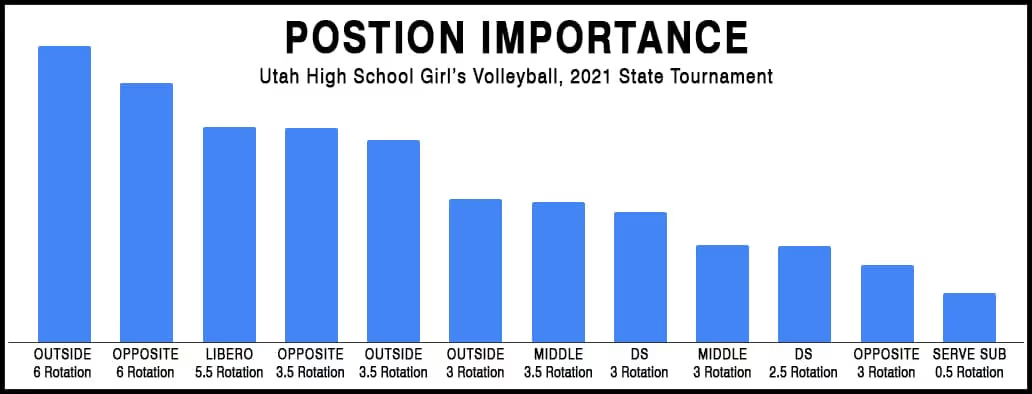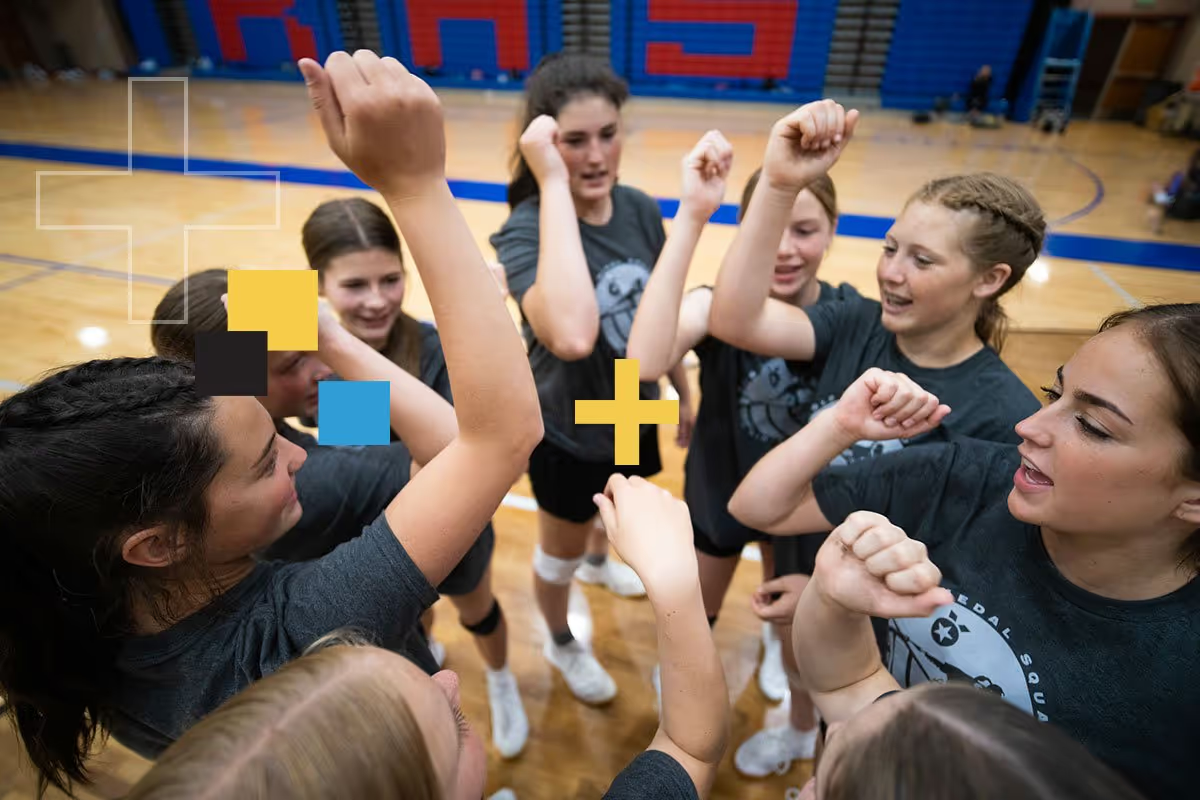At every Gold Medal Squared,we discuss the positions on a volleyball roster that most affect the outcome of a match.
We then have a mini mock draft session and talk about what players would be our first pick, second pick, third pick, and so on if we had the opportunity to have a school-yard type draft to create the perfect volleyball team. We would pick our players based on what players are most important.
We determine that level of importance by looking at the specific skills that influence a volleyball match (spiking, passing, digging, serving, and blocking), then by looking at the positions on a volleyball team most commonly performing those skills.

In high school and junior girl's volleyball, we've determined that the best Outside Hitter will almost always be the most important player on a team's roster because of how often left-side attackers will be spiking throughout a volleyball match (more than 50% of a team's attacking attempts are made by left-side attackers). Outside Hitters also commonly serve and pass and dig, which increases their level of importance.
Following the top outside hitter, it's also becoming increasingly important for good teams to have a good right-side attacker. Additionally, the value of a libero is very high.
Although a setter doesn't participate in very many of the key skills (a setter won't attack or pass, for example) she is vitally important in helping her teammates score points. So while we can't rank a setter's importance in terms of scoring points, we know that a good setter will help each attacker's ability to influence a match, and a weaker setter will have the opposite effect. Therefore, it's fair to add the setter into the previous group of players that are equally as important to a team's potential success.

As the level of volleyball increases to really good varsity teams, college teams, and international teams, the importance of the following players two positions will noticeably increase: Opposite (because setters are better at setting behind) and Middle #1 (because passing is better, resulting in more in-system opportunities for middle attackers. Middle #1 also can run more slide attacks as the athleticism of each player improves.).

Now, back to the mock drafts we discuss at our coaching clinics every summer. We ask, "If we are having a draft, and you can go out there and pick anybody you want, who are you going to pick?" The first answer is always "the best Outside Hitter," because she's the player that will perform the most skills that affect the outcome of the match. Then the second player drafted in our mock draft is the other Outside Hitter, because now we need another good Outside when our first Outside goes into the back row. Following the two Outside Hitters, we see the Opposite, Middle #1, Libero, and Setter get drafted in slots #3-#6 in no particular order. Finally, Middle #2 is the last player selected.

This activity has always been purely hypothetical because we've never witnessed a scenario in which an entire volleyball team could be drafted by team captains from a pool of players that include several players of each position. Until now...
Athletes Unlimited is a brand new professional league in the United States in which four different team captains create their individual teams through a snake-style draft as they select players from a pool of 44 players (12 Outside Hitters, 12 Middle Blockers, 8 Opposites, 8 Setters, and 4 Liberos).
After each week of matches, four new team captains are assigned and four new teams are created from the same pool of 44 players.
For the first time ever, we can compare our clinic mock drafts to real-life drafts taking place in the same format. Keep in mind, these are extremely high-level professional volleyball teams, so the importance of each player is slightly different than it would be for a younger high school or juniors team.
The Athletes Unlimited drafts contain eleven rounds. Each team is required to have 3 Outside Hitters, 3 Middle Blockers, 2 Opposites, 2 Setters, and 1 Libero.
The following chart shows the percentages of each specific position taken in each round of the Athletes Unlimited drafts.
The above chart shows us that the team captains select their Outside Hitter #1 in the first round 75% of the time. The remaining 25% of the first-round picks are used to select Opposites. We can also see that every team selects its top Outside Hitter by the second round at the very latest.
From there we see a pretty equal mix of Opposites, Middles #1, Setters, and Outside Hitters #2 selected in the next several rounds, followed by the Middle #2 and Libero. The final rounds are used to take reserve players of each position.
The following chart shows the average draft order spot of each specific position.
The above chart clearly displays the value of an Outside Hitter #1, with an average draft pick order that is far-and-away better than any other position on a roster.
I've had the opportunity to ask some of the recent team captains about their draft strategies when creating their teams. Bethania De La Cruz's first two players were an OH #1 (herself) in the first round and an Opposite in the second round. She communicated to me that she first values the strength of attackers on the sides (left-side and right-side). Her third pick was her Setter, followed by a MB #1, Libero, and then MB#2. She told me that she likes to compliment the two strongest pin attackers with a good middle and good passing.
Jordan Larson took an OH #1 (herself) in the first round, followed by both Middle Blockers, a Setter, and an OH #2 in rounds 2-5. She explained to me that passing is a priority in her draft strategy, so she wanted to add another good passing Outside Hitter to the roster, along with two terminal Middle Blockers as quickly as possible. She then selected an Opposite and Libero.







